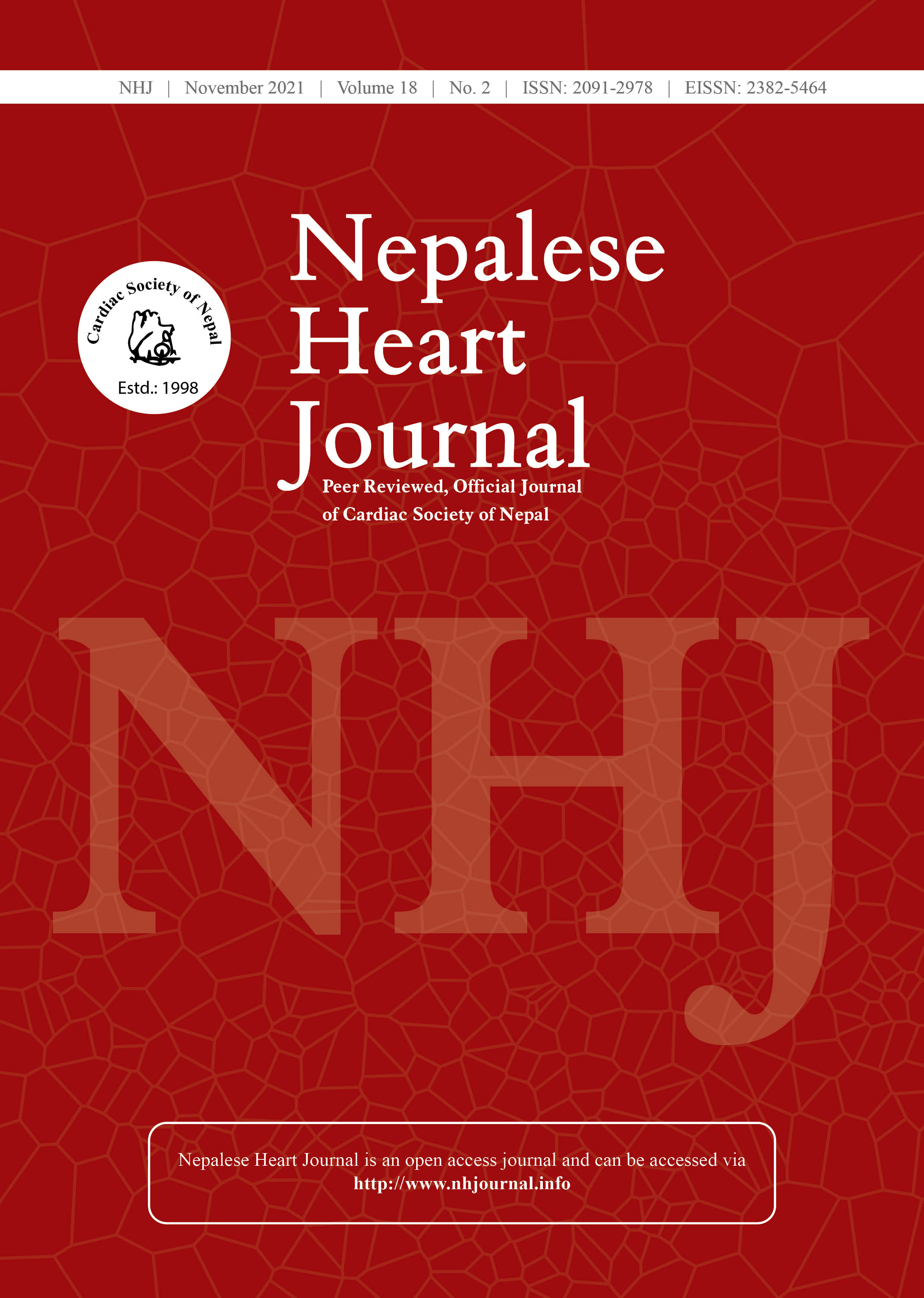The In-hospital Outcome of Ventricular Septal Defect Closure and Predictor of Morbidity and Mortality at Tertiary Level Cardiac Center
DOI:
https://doi.org/10.3126/njh.v18i2.40403Keywords:
Ventricular septal defect, outcome predictors, surgical closureAbstract
Background and Aims: Factors responsible for complications and outcomes of surgical closure of ventricular septal defect differ between different cardiac centers globally. In this study, we tried to evaluate outcomes and predictors of morbidity and mortality of surgical closure of VSD in a single center.
Methods: The retrospective cohort study was conducted in Shahid Gangalal National Heart Centre from 14th April 2018 to 13th April 2020. It included consecutive series of patients undergoing ventricular septal defect closure as a primary surgery
Results: Out of a total 166 patients, males were 100 (60%). Adverse complications occurred on 36 (21%) with mortality of 6 (3.6%). The age ranged from 4 months to 35 years. The weight <10 kgs at the time of operation had significant post-operative prolong ventilation duration (more than 6 hours) with a p value of 0.012; significant prolong ICU stays (>2 days) with a p value of <0.001; significant prolong hospital stay (> 7 days) with a p value of <0.001. The longer CPB time was associated with significantly prolonged ventilation duration (p value 0.001); significant longer ICU stay (p value 0.02). The age <1 year at the time of operation had significant prolonged ICU stay; significantly prolonged hospital stays (p value of 0.033). Severe pulmonary artery hypertension (PAH) and weight up to 10 kgs at the time of operation demonstrated a trend towards association with mortality.
Conclusion: Surgical VSD closure can be done with acceptable level of mortality and morbidity in our context.
Downloads
Downloads
Published
How to Cite
Issue
Section
License
Copyright (c) 2021 Nepalese Heart Journal

This work is licensed under a Creative Commons Attribution 4.0 International License.
This license enables reusers to distribute, remix, adapt, and build upon the material in any medium or format, so long as attribution is given to the creator. The license allows for commercial use.




